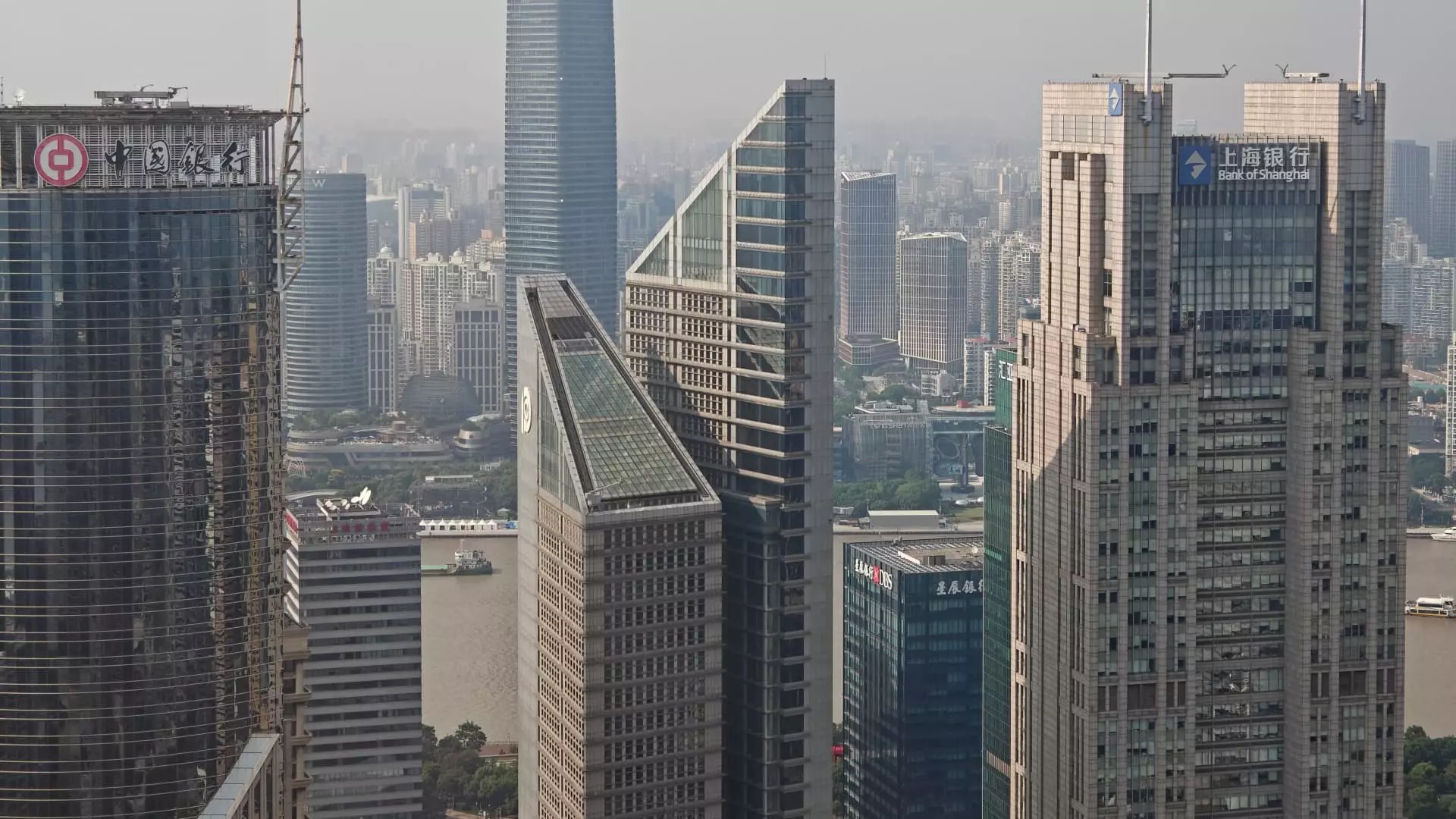Chinese equities have long been portrayed as a burgeoning opportunity for investors seeking rapid growth, yet recent developments suggest that this narrative is increasingly disconnected from reality. The optimistic outlook surrounding China’s market recovery is no more than a mirage masking underlying structural fragility. Investors chasing high returns in mainland Chinese stocks, particularly “A Shares” and Hong Kong-listed entities, need to recognize that the current momentum is superficial at best. The lack of decisive policy action to stimulate growth, coupled with geopolitical uncertainties, signals that the so-called resilience might be time-limited. A critical analysis reveals risk factors that many have yet to acknowledge, risking portfolios that are overexposed to a fragile and unpredictable market.
The Specter of Volatility and Political Inertia
Analysts from Morgan Stanley, led by Laura Wang, caution investors against complacency amid the ongoing geopolitical and economic ambiguities. They warn of a potential surge in market volatility over the upcoming months—a warning that should not be taken lightly. Despite superficial gains, such as the slight ascent of the Hang Seng Index, the broader picture remains troubling. Chinese policymakers’ inability to effectively boost growth, combined with the upcoming expiration of trade truce agreements with the U.S., places the industry on shaky ground. The absence of concrete action from the Politburo ahead of the critical July meetings signals inertia, which can foster market unpredictability and diminish investor confidence. Investors should critically evaluate whether the recent upticks are sustainable or merely transient blips driven by speculative fervor.
The Promise and Pitfalls of Dividend Plays in a Turbulent Environment
In turbulent times, many institutional investors gravitate toward high-yield, defensive stocks, and Chinese dividend plays are gaining renewed attention. While these assets might seem like safe havens, they carry their own set of risks. For instance, companies like PICC P&C provide attractive dividend yields of around 4.5%, ostensibly offering some measure of income stability. However, relying on such yield plays presumes a stable macroeconomic backdrop, which is a dangerous assumption given China’s sluggish growth and regulatory uncertainties. While dividend plays can provide some cushioning, they do not guarantee immunity from downturns—especially when financial conditions tighten or when geopolitical tensions escalate. Overemphasizing these assets can lull investors into complacency, ignoring the broader vulnerabilities embedded within China’s economic fabric.
Disparity Between Market Segments: Tech Surge vs. State-Driven Growth
The divergence in performance between Hong Kong-listed stocks and mainland Chinese markets highlights the fractured confidence among investors. The tech-heavy Hong Kong market’s impressive 20% gain contrasts sharply with the sluggish 3% rise of the Shanghai Composite, dominated by state-owned enterprises. This discrepancy underscores that investor confidence in Chinese tech giants is driven more by sentiment and optimism about artificial intelligence and innovation than tangible economic recovery. Yet, this optimism is precarious; the sector faces potential regulatory crackdowns, slowing growth, and international skepticism. For long-term stability, investors should question whether the tech rally is supported by fundamental growth or short-term speculative trading, which can turn sour unexpectedly.
The Changing Tides for Foreign and Domestic Investors
Mainland Chinese investors are increasingly seeking higher yields in Hong Kong-listed stocks like PetroChina and CR Power—both paying substantial dividends—due to limited domestic investment options and restrictions on cross-border capital flows. While this may seem advantageous superficially, it also indicates domestic investors’ disillusionment with China’s growth prospects. Simultaneously, international investors favor diversified portfolios, viewing Chinese assets as inherently risky compared to U.S. and European equities. The tendency of Chinese investors to flock toward high-yield stocks reflects a search for refuge amidst structural concerns. However, it also exposes them to market volatility and political risks—an inconsistency that demands pragmatic caution rather than euphoric optimism.
The allure of China’s promising growth stories often obscures the systemic issues threatening stability—be it political inertia, geopolitical tensions, or economic stagnation. Investors who fall for the narrative of endless growth, driven by headline gains and dividend yields, put themselves at risk of significant losses when the inevitable corrections occur. It is essential to recognize that the Chinese market, while offering some opportunities, remains fundamentally vulnerable to external shocks and policy missteps. A vigilant and cautious approach—focused on sustainability rather than fleeting trends—is paramount for those aiming for long-term portfolio resilience in an increasingly complex global landscape.


Leave a Reply